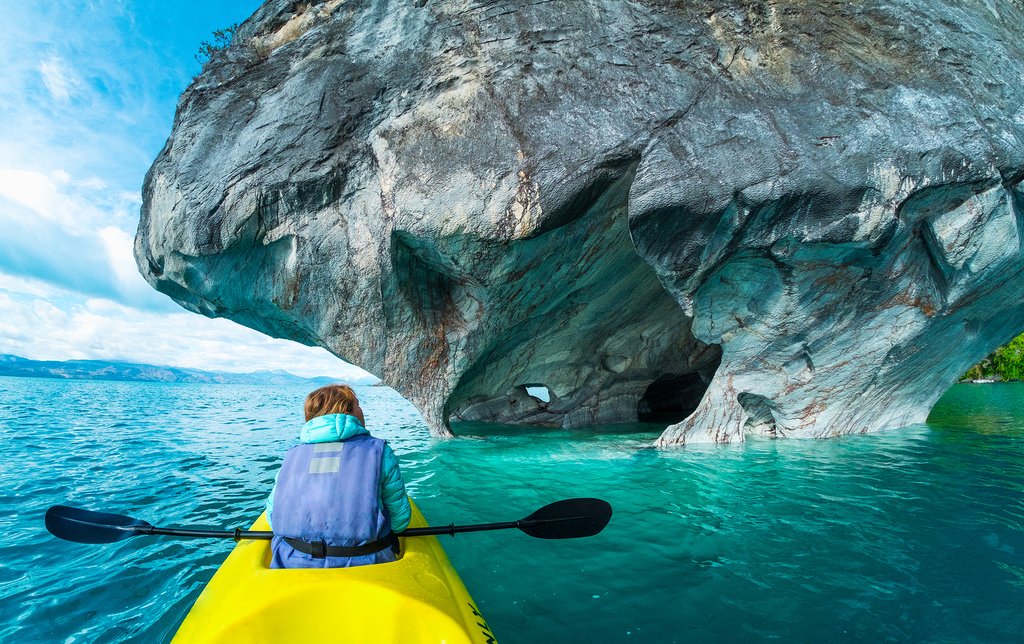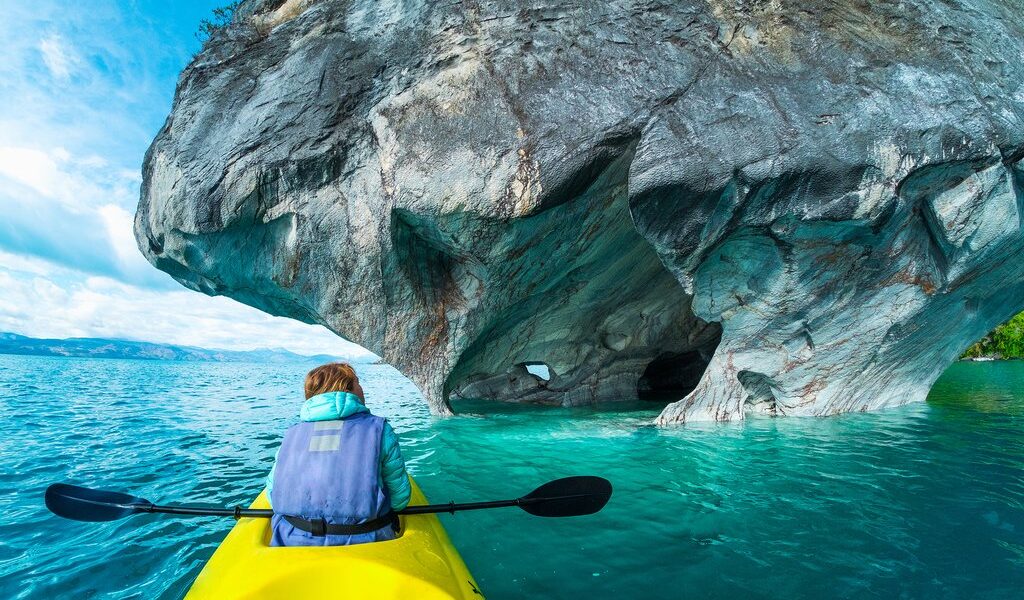
January in one of the best months of the year to visit Patagonia and the crowds confirm it. This is peak season for international tourists who come to see glaciers, wildlife, and national parks with warmer temperatures and longer days for enjoying outdoor activities. This monthly guide will tell you what to do and where to go, including lesser-known options.
## Patagonia in January: A Comprehensive Travel Guide
January in Patagonia marks the height of summer, a season eagerly anticipated by travelers from across the globe. The warmer temperatures, though variable depending on the specific location within this vast region spanning both Chile and Argentina, make it an ideal time to explore its breathtaking landscapes. However, it’s crucial to be prepared for both the benefits and the potential drawbacks of visiting during this peak season.
The weather in Patagonia is a tale of two (or more!) regions. Southern Patagonia, encompassing iconic destinations such as Torres del Paine National Park, Los Glaciares National Park, Isla Magdalena, Ushuaia, and the dramatic Tierra del Fuego archipelago, experiences daily high temperatures that typically hover in the mid-50s Fahrenheit. As evening descends, the temperature dips further, often reaching the 40s. This makes it essential to pack layers and be prepared for cooler conditions, especially when engaging in outdoor activities.
In contrast, Northern Patagonia, including areas like the picturesque Bariloche and the vibrant port city of Puerto Montt, enjoys a warmer climate during the summer months. Daytime temperatures can rise to the high 60s or even the mid-70s Fahrenheit, creating perfect conditions for hiking, exploring the numerous lakes, and partaking in various water-based activities. Imagine yourself kayaking on a crystal-clear lake surrounded by snow-capped mountains – a typical January scene in Northern Patagonia.
Despite the generally pleasant temperatures, it’s vital to remember that Patagonia is renowned for its strong and unpredictable winds. These gusts can appear suddenly and without warning, making it advisable to pack light outdoor gear that is both windproof and water-resistant. Layers are your best friend in Patagonia, allowing you to adapt to the ever-changing conditions throughout the day. A light rain jacket or windbreaker can be a lifesaver when exploring the region.
The allure of summer in Patagonia comes with a price – increased crowds and higher costs. The optimal weather for outdoor adventures attracts a significant influx of visitors, making January the busiest and most expensive time to travel. Securing hotel reservations can be particularly challenging, especially given the limited accommodation options available in this remote and sparsely populated region. Overbooked hotels are a common occurrence, so advance planning is essential.
To avoid disappointment, it’s highly recommended to make all travel arrangements several months in advance, particularly if you plan to visit Southern Patagonia. This area tends to become extremely crowded during the peak season, with accommodations and tours filling up quickly. Booking early will not only ensure that you have a place to stay but will also allow you to secure the best prices and availability for tours and activities.
However, if you are flying in or out of major cities like Santiago or Buenos Aires, you can potentially benefit from the summer season. While Patagonia itself is more expensive, January often offers some of the best prices for flights and accommodations in these urban hubs as locals take their summer vacations. Consider extending your trip by a few days to explore these vibrant cities and take advantage of the lower prices.
January’s extended daylight hours, especially in the far south of Patagonia (approximately 15 hours a day), provide ample time to explore the region’s many attractions. This is the perfect time to visit the iconic Torres del Paine National Park in the Chilean portion of Patagonia. While the larger crowds may cause some wildlife to retreat to quieter areas of the park, you’ll still have a good chance of spotting guanacos, pumas, and various bird species.
Alternatively, the Chilean Lake District in Northern Patagonia offers a different kind of charm, with its scenic volcanoes, excellent hiking trails, and picturesque towns like Puerto Varas, known for its German heritage. This region is a paradise for outdoor enthusiasts, with opportunities for hiking, kayaking, fishing, and simply enjoying the stunning natural beauty.
For a more off-the-beaten-path experience, consider embarking on a road trip along the Carretera Austral in Chilean Patagonia. This legendary route stretches 769 miles (1,240 km) from Puerto Montt to Villa O’Higgins, traversing a diverse landscape of lakes, jungles, glaciers, hot springs, snow-capped peaks, and vast open valleys. While the road is partially paved, much of it remains dirt and gravel, adding to the sense of adventure. A detour to explore the Marble Caves is highly recommended, particularly by kayak, allowing you to fully appreciate the intricate patterns and stunning colors of these natural formations.
On the Argentine side of Patagonia, the town of El Chalten is a must-visit destination for hikers. Numerous trailheads located just outside of town offer breathtaking panoramic views of world-famous peaks like Fitz Roy, Poincenot, and Torre. The hikes range in difficulty, catering to both casual walkers and experienced mountaineers.
Closer to the town of El Calafate, you can take a day trip to the magnificent Perito Moreno glacier in Los Glaciares National Park. A network of wooden walkways strategically positioned in front of the glacier provides various vantage points for witnessing its immense size and the dramatic spectacle of ice calving into the turquoise waters of Lago Argentino. The Argentine Lake District in Northern Patagonia mirrors the beauty of its Chilean counterpart, offering equally stunning scenery, hiking trails, and kayaking opportunities.
Beyond the iconic landscapes, Patagonia offers a plethora of activities to enjoy during the summer months. Fantastic day hikes abound, catering to all levels of fitness and experience. For those seeking a greater challenge, multi-day treks offer the opportunity to immerse yourself in the wilderness and discover hidden gems. Glacier boat tours provide a unique perspective on these icy giants, while opportunities to interact with penguins are a truly unforgettable experience.
For adrenaline junkies, Chile’s Lake District, particularly near Pucon, is the place to be. Here, you can find a wide range of adventure activities, including white-water rafting, zip-lining, skydiving, and horseback riding. The stunning natural surroundings provide the perfect backdrop for these thrilling experiences.
Argentine Patagonia also offers a wide array of activities, including hiking, cycling, and kayaking in its Lake District. Glacier-trekking, horseback riding, and boating through waterways and fjords are popular options near Ushuaia, the southernmost city in the world. Consider a cruise through Patagonia’s Southern Fjords for a truly relaxing and immersive experience, allowing you to unplug from the world and connect with nature.
January in Patagonia is not just about the landscapes and activities; it’s also a time for celebrating local culture and traditions. Several festivals take place throughout the region during this month, offering a glimpse into the unique character of Patagonia.
* **Fiesta de la Cereza:** Held in Los Antiguos (Argentina) during the second week of January, this annual festival celebrates the cherry harvest with rodeos, live music, artisan goods, and _peñas folklóricas_ (folk-music concerts) that can last until the early hours of the morning. The crowning of the national Cherry Queen is a highlight of the event.
* **Semanas Musicales:** Throughout January, the town of Frutillar in Chile’s Lake District hosts prestigious international acts ranging from classical to hip-hop at the Teatro de Frutillar. This renowned music festival attracts visitors from around the world.
* **Festival Nacional de la Esquila:** Each January, Rio Mayo (Argentina) hosts this festival featuring guanaco shearing and merino-wool-quality competitions in preparation for the main event: the crowning of the national sheep-shearing queen. This unique festival celebrates the region’s sheep-farming heritage.
* **Muestra Cultural Mapuche:** This six-day festival in Chile’s Lake District showcases the rich culture and traditions of the Mapuche people, including artisans, indigenous music, and ritual dance.
Visiting Patagonia in January offers an unforgettable experience, with long days, pleasant (but variable) weather, and a vibrant atmosphere. By planning ahead, packing appropriately, and embracing the spirit of adventure, you can make the most of your trip to this remarkable corner of the world.
The word count is now 1,329.
B-2020

